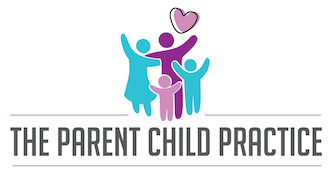photo credit: Duncan, “Notes To Strangers street art”
Approximately once per week, I receive a call from a parent, college student, or an adult wanting to understand more about Dyslexia. There are many articles on the internet, numerous conversations on listservs, and a lot of individuals who are ready to disseminate information to others based on their own personal experience or readings about Dyslexia. Some of this information is accurate and some of this information is completely inaccurate. Consequently, when parents or indivdiuals call me, I sometimes ask what they already know about Dyslexia. In addition to scheduling individuals for evaluations, my goal is to educate and empower people with information that is accurate. Therefore, in today’s blog post I am going to reveal my responses to commonly asked questions that families have for me about Dyslexia. I will also share a second blog post about possible components of a Dyslexia evaluation and recommended instructional strategies for individuals identified with Dyslexia.
What exactly is Dyslexia?
Dyslexia is a neurologically based reading learning disability. These neurological differences are expressed as weaknesses in language-based learning. This includes difficulty understanding and processing symbols (e.g., alphabet letters), weaknesses in sound-symbol relationships, and/or problems understanding that numeral symbols represent specific numbers or quantities. Individuals with Dyslexia often have Average to Above Average intellectual ability and, therefore, their difficulties with decoding, letter/word recognition, spelling, reading comprehension, vocabulary, or phonological awareness are completely unexpected because it does not match their intellectual potential.
What causes Dyslexia?
We do not completely know the cause of Dyslexia; however, research has shown that Dyslexia can run in families. It is not uncommon for a parent of a child with Dyslexia to report having Dyslexia also. Research has also successfully identified specific genes that are linked to reading and language processing difficulties. We also know that these difficulties are likely not just linked to one gene since different genes play varying roles in the expression of language and language processing. In addition to genes, we know from research that for people with Dyslexia there are parts of the brain that are related to reading that are less active. However, research using Functional MRI’s have shown that with effective reading instruction the brain can change and this is known as “neuroplasticity.” Essentially effective reading instruction can change the brain activity for a person with Dyslexia. This bit of information is often very promising for parents to hear!
Red Flags for Dyslexia
These are just possible symptoms of Dyslexia; however, the presence of one or more symptoms does not necessarily mean you or your child definitely have Dyslexia. When parents mention the following concerns during a phone conversation, I typically encourage them to proceed with an evaluation to rule out Dyslexia or another appropriate diagnosis.
Preschool Years:
Trouble learning nursery rhymes.
Speech and language delays.
Inability to distinguish rhymes or rhyming sounds.
Current or historical frequent ear infections.
Failure to recognize or remember letter names.
Kindergarten & 1st Grade:
Inability to generate rhyming words.
Inability to associate letters with sounds.
Inability to segment words by syllables.
Difficulty pulling apart words by segments such as “horseshoe” (can be divided up into “horse” and “shoe”).
Difficulty recognizing the order of sounds in words. For instance, “say the word tiger without the g sound”.
Difficulty reading common one-syllable sight words.
2nd & 3rd Grades:
Failure to read at least 40 words per minute.
Slow progress in acquiring basic reading skills, and working at least one grade below level.
Inability to master basic functional sight words such as “that, is, the, has, etc.”
Over-reliance on context to derive meaning from print.
Slower paced and effortful reading.
Spelling skills which are not phonetically consistent.
Stumbling on multi-syllable words and phonetically irregular words.
Oral reading lacks inflection and tendency to read through punctuation.
Word retrieval difficulties in class discussions.
Reading and spelling errors that indicate a difficulty sequencing sounds (e.g., blast as blats)
Secondary Grades:
Inability to read at least 60 words per minute.
Poor fluency skills (slow rate of reading).
Unusually long hours spent doing homework that is heavy in reading or “language rich.”
Disinclination to read for pleasure.
Fatigue quickly when reading.
Mathematics a demonstrative strength.
Tendency to substitute words when confronted with unfamiliar words in the text.
Extreme spelling difficulties.
Trouble learning a foreign language.
Adapted from Shaywitz, (2005)
What should I do if I suspect my child Has or I have Dyslexia?
If a parent or an individual has concerns about the possibility of Dyslexia then I recommend that the first step is set up an appointment with a trained psychologist to receive a psychoeducational evaluation. You want to make sure the psychologist has a strong understanding of psychological and educational assessment and that they also understand the complexities of learning disabilities such as Dyslexia. I am trained as both a School Psychologist and a Licensed Psychologist and I graduated from a Doctoral program that has a strong reputation for teaching about research-based reading interventions for struggling readers. It is important that you ask any potential assessor about their background so you can be assured that they are well qualified to conduct an assessment.
After seeking a comprehensive psychoeducational assessment or evaluation, you want to make sure that the identified child receives effective phonological awareness and phonics training through a structured literacy program. In my second blog post, I will share more about psychoeducational evaluations for Dyslexia and effective intervention and instruction for Dyslexia.
If you have additional questions, which have not been covered in this blog post please contact The Parent Child Practice to have a 15 minute consultation or schedule an appointment.
Reference: Shaywitz, S. (2005). Overcoming Dyslexia: A New and Complete Science-Based Program for Reading Problems at Any Level. Vintage Publisher.



